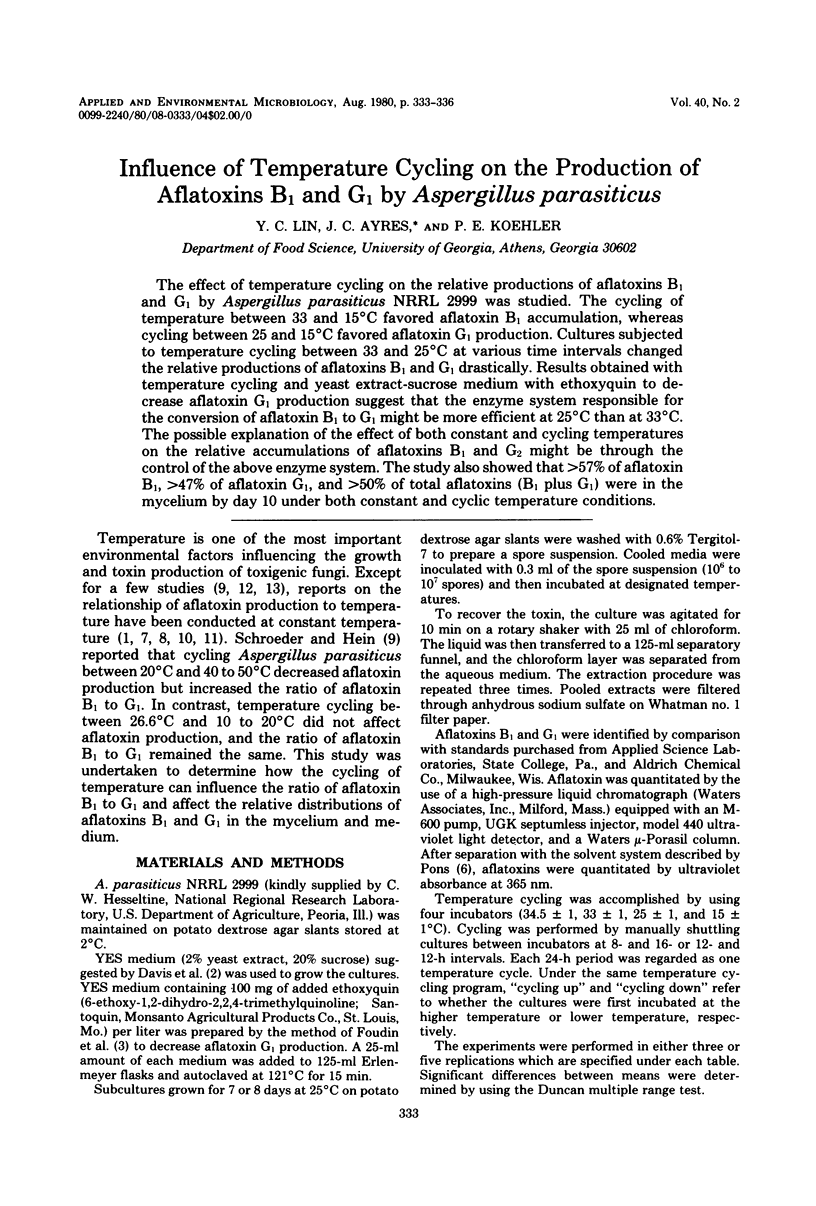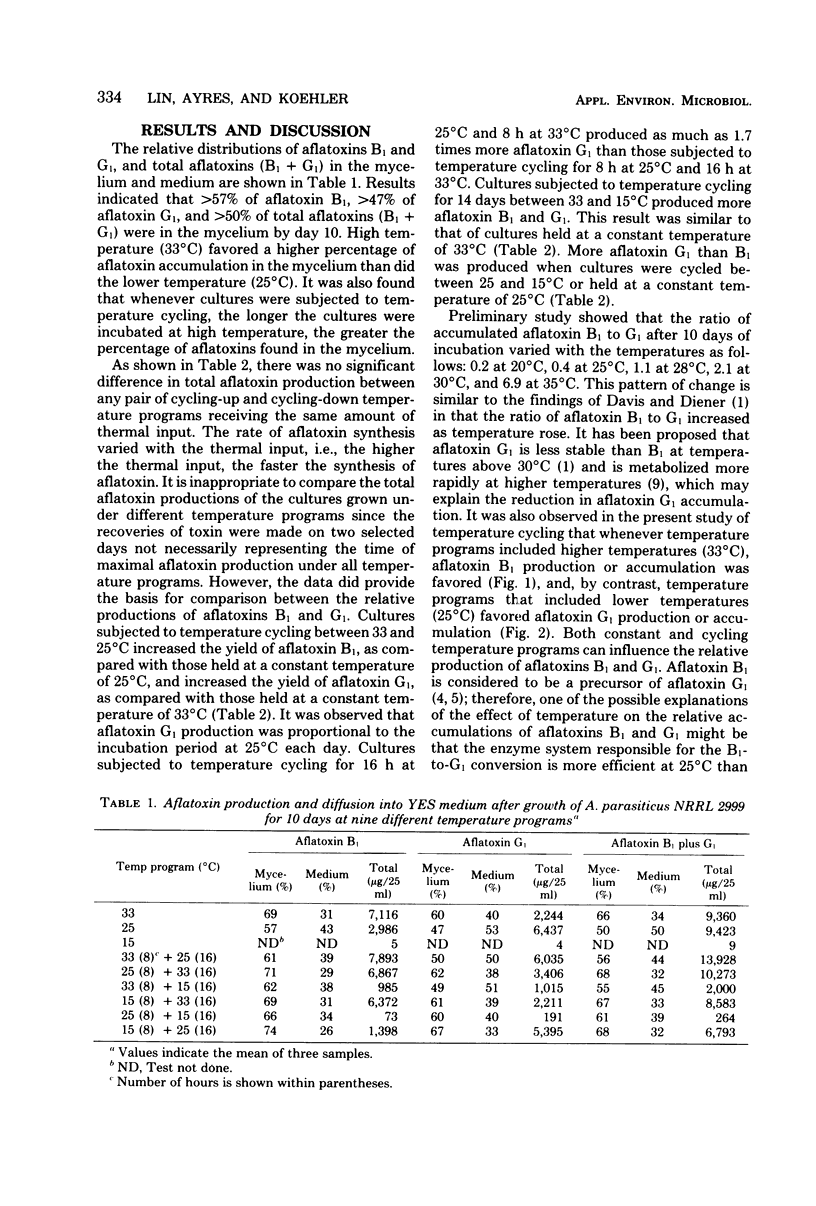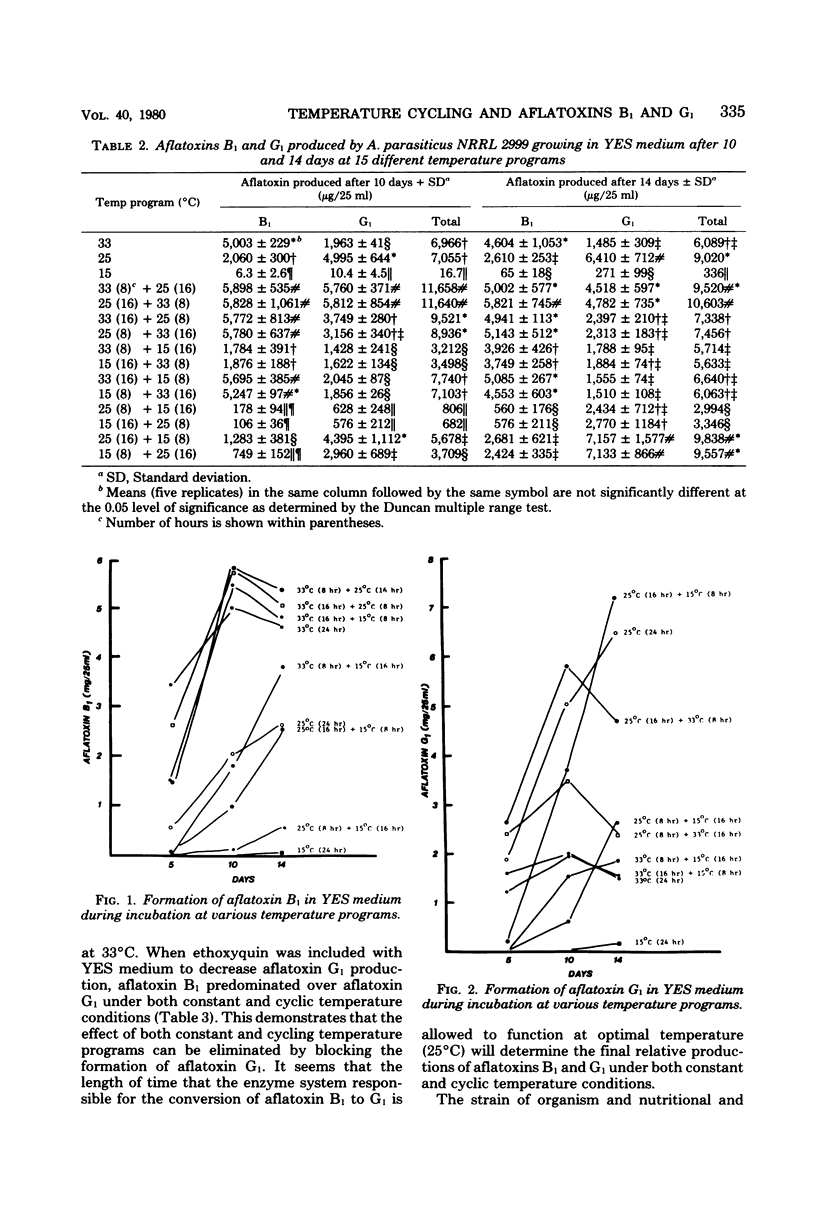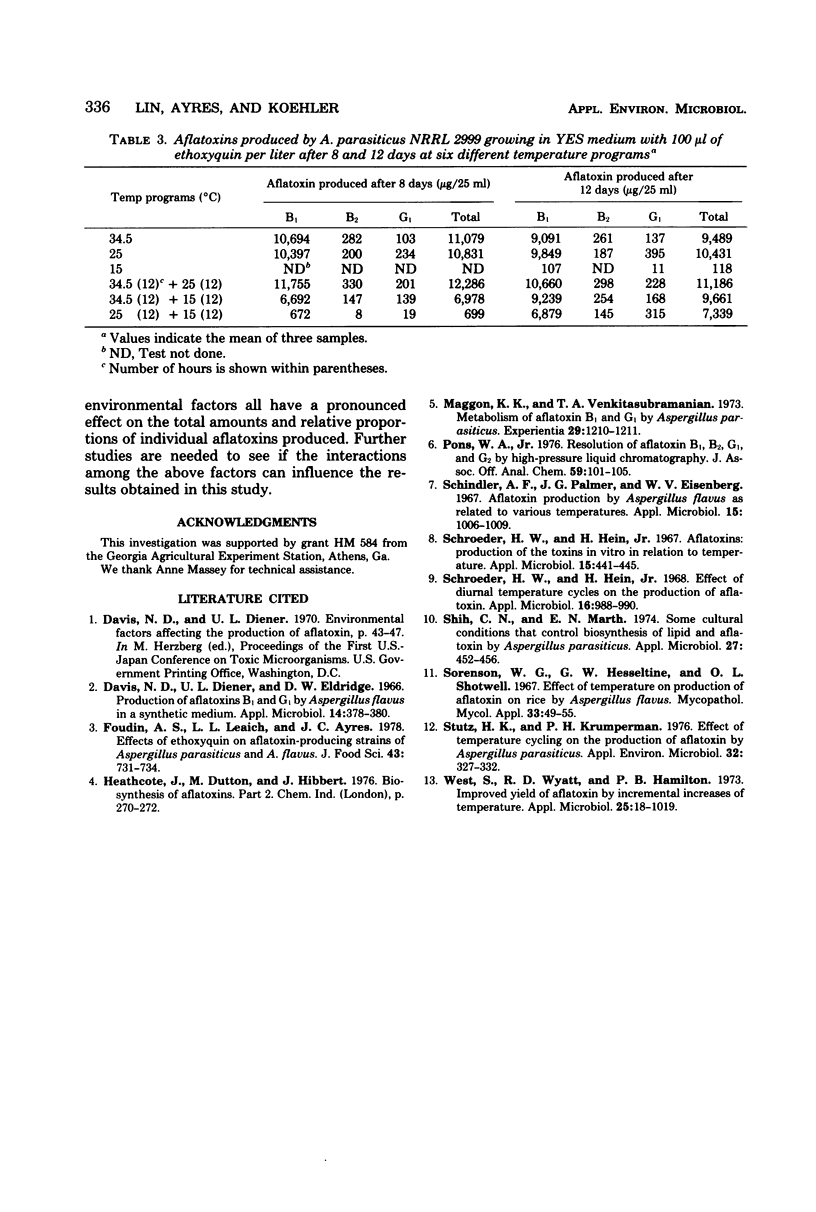Abstract
The effect of temperature cycling on the relative productions of aflatoxins B1 and G1 by Aspergillus parasiticus NRRL 2999 was studied. The cycling of temperature between 33 and 15 degrees C favored aflatoxin B1 accumulation, whereas cycling between 35 and 15 degrees C favored aflatoxin G1 production. Cultures subjected to temperature cycling between 33 and 25 degrees C at various time intervals changed the relative productions of aflatoxins B1 and G1 drastically. Results obtained with temperature cycling and yeast extract-sucrose medium with ethoxyquin to decrease aflatoxin G1 production suggest that the enzyme system responsible for the conversion of aflatoxin B1 to G1 might be more efficient at 25 degrees C than at 33 degrees C. The possible explanation of the effect of both constant and cycling temperatures on the relative accumulations of aflatoxins B1 and G2 might be through the control of the above enzyme system. The study also showed that greater than 57% of aflatoxin B1, greater than 47% of aflatoxin G1, and greater than 50% of total aflatoxins (B1 plus G1) were in the mycelium by day 10 under both constant and cyclic temperature conditions.
Full text
PDF



Selected References
These references are in PubMed. This may not be the complete list of references from this article.
- Davis N. D., Diener U. L., Eldridge D. W. Production of aflatoxins B1 and G1 by Aspergillus flavus in a semisynthetic medium. Appl Microbiol. 1966 May;14(3):378–380. doi: 10.1128/am.14.3.378-380.1966. [DOI] [PMC free article] [PubMed] [Google Scholar]
- Maggon K. K., Venkitasubramanian T. A. Metabolism of aflatoxins B1 and G1 by Aspergillus parasiticus. Experientia. 1973 Oct 15;29(10):1210–1211. doi: 10.1007/BF01935075. [DOI] [PubMed] [Google Scholar]
- Pons W. A., Jr Resolution of aflatoxins B1, B2, G1, and G2 by high-pressure liquid chromatography. J Assoc Off Anal Chem. 1976 Jan;59(1):101–105. [PubMed] [Google Scholar]
- Schindler A. F., Palmer J. G., Eisenberg W. V. Aflatoxin Production by Aspergillus flavus as Related to Various Temperatures. Appl Microbiol. 1967 Sep;15(5):1006–1009. doi: 10.1128/am.15.5.1006-1009.1967. [DOI] [PMC free article] [PubMed] [Google Scholar]
- Schroeder H. W., Hein H., Jr Aflatoxins: production of the toxins in vitro in relation to temperature. Appl Microbiol. 1967 Mar;15(2):441–445. doi: 10.1128/am.15.2.441-445.1967. [DOI] [PMC free article] [PubMed] [Google Scholar]
- Schroeder H. W., Hein H., Jr Effect of diurnal temperature cycles on the production of aflatoxin. Appl Microbiol. 1968 Jul;16(7):988–990. doi: 10.1128/am.16.7.988-990.1968. [DOI] [PMC free article] [PubMed] [Google Scholar]
- Shih C. H., Marth E. H. Some cultural conditions that control biosynthesis of lipid and aflatoxin by Aspergillus parasiticus. Appl Microbiol. 1974 Mar;27(3):452–456. doi: 10.1128/am.27.3.452-456.1974. [DOI] [PMC free article] [PubMed] [Google Scholar]
- Stutz H. K., Krumperman P. H. Effect of temperature cycling on the production of aflatoxin by Asperfillus parasiticus. Appl Environ Microbiol. 1976 Sep;32(3):327–332. doi: 10.1128/aem.32.3.327-332.1976. [DOI] [PMC free article] [PubMed] [Google Scholar]
- West S., Wyatt R. D., Hamilton P. B. Improved yield of aflatoxin by incremental increases of temperature. Appl Microbiol. 1973 Jun;25(6):1018–1019. doi: 10.1128/am.25.6.1018-1019.1973. [DOI] [PMC free article] [PubMed] [Google Scholar]


